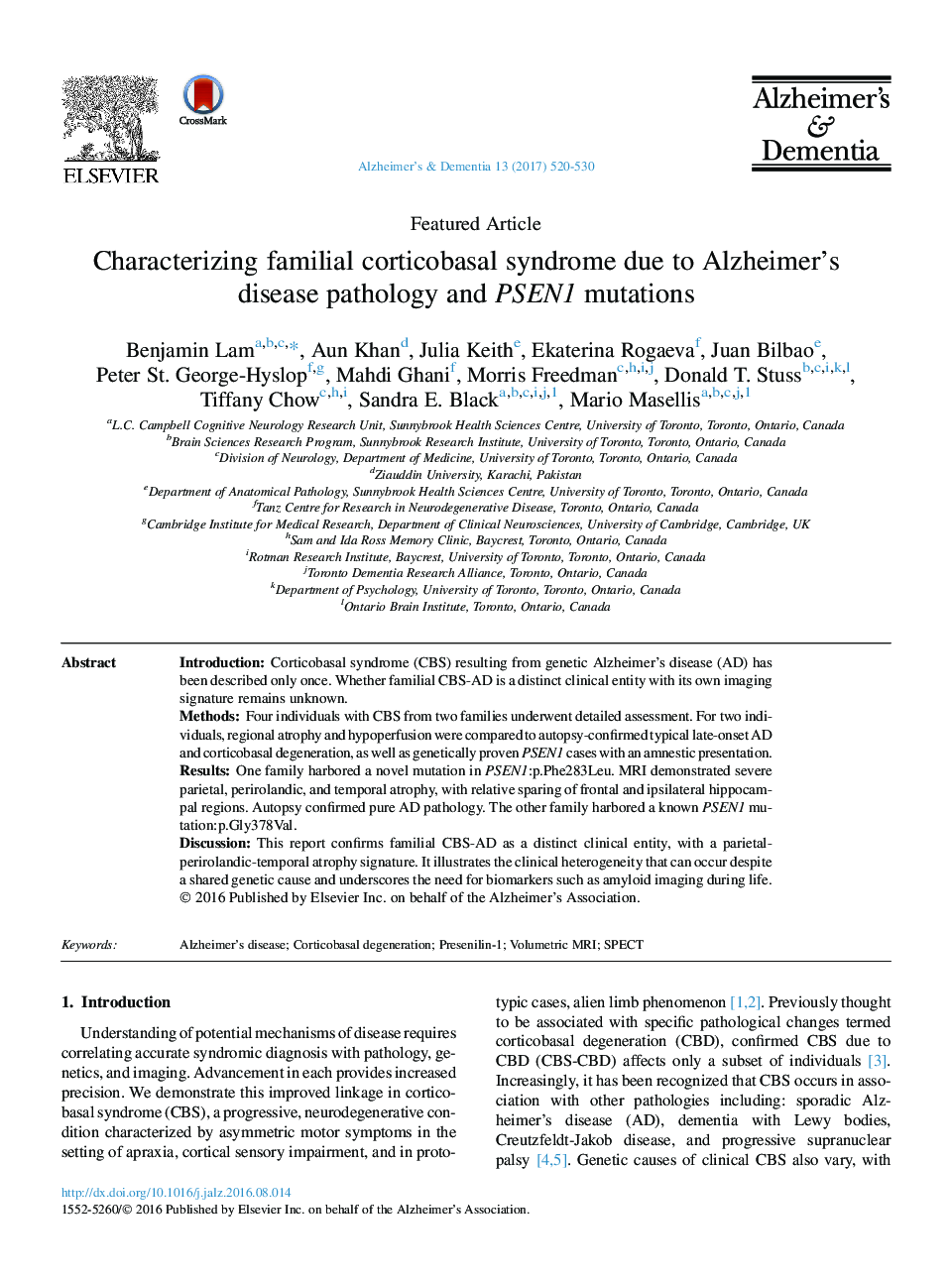| Article ID | Journal | Published Year | Pages | File Type |
|---|---|---|---|---|
| 5623700 | Alzheimer's & Dementia | 2017 | 11 Pages |
â¢CBS can result from autosomal dominant AD (familial CBS-AD), due to PSEN1 mutationsâ¢Familial CBS-AD demonstrates a parietal-temporal-perirolandic atrophy pattern on MRIâ¢Familial CBS-AD can demonstrate variable phenotype even within a single familyâ¢Genetic testing, especially for PSEN1, should be considered in atypical CBS
IntroductionCorticobasal syndrome (CBS) resulting from genetic Alzheimer's disease (AD) has been described only once. Whether familial CBS-AD is a distinct clinical entity with its own imaging signature remains unknown.MethodsFour individuals with CBS from two families underwent detailed assessment. For two individuals, regional atrophy and hypoperfusion were compared to autopsy-confirmed typical late-onset AD and corticobasal degeneration, as well as genetically proven PSEN1 cases with an amnestic presentation.ResultsOne family harbored a novel mutation in PSEN1:p.Phe283Leu. MRI demonstrated severe parietal, perirolandic, and temporal atrophy, with relative sparing of frontal and ipsilateral hippocampal regions. Autopsy confirmed pure AD pathology. The other family harbored a known PSEN1 mutation:p.Gly378Val.DiscussionThis report confirms familial CBS-AD as a distinct clinical entity, with a parietal-perirolandic-temporal atrophy signature. It illustrates the clinical heterogeneity that can occur despite a shared genetic cause and underscores the need for biomarkers such as amyloid imaging during life.
